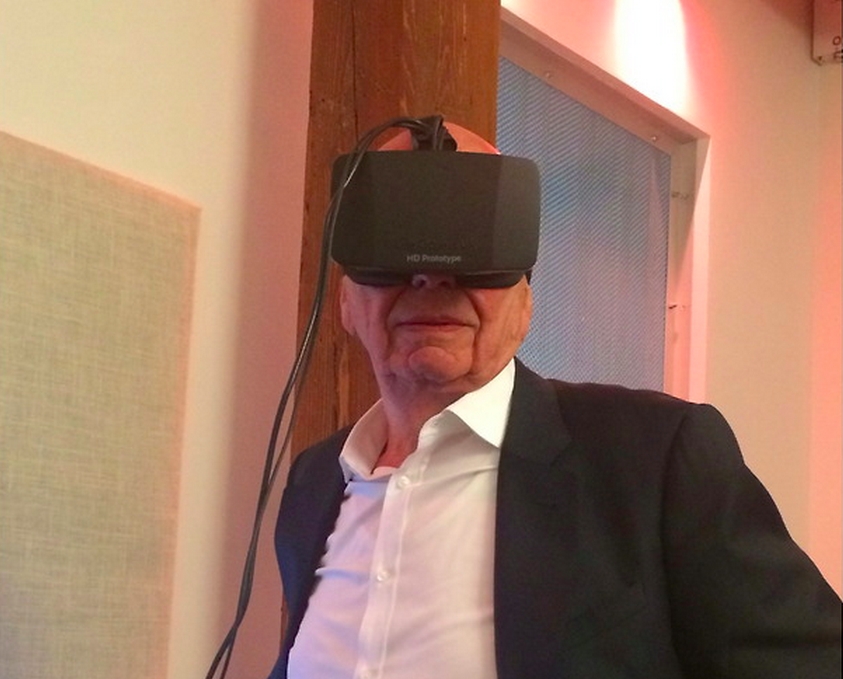My first Virtual Reality experience was during the 1990s while working in a non-profit media place that had a clunky VR helmet for visitors to experience. One guest was rock icon Lou Reed, who sat in a chair and pulled the device over his head. He paused a moment, and then said to the woman who was assisting, “What happens now? Does someone pull on my cock?”
Perhaps because it didn’t come with free tug jobs or maybe because the technology was still lacking, Virtual Reality was a bomb two decades ago. Those who’ve tested the latest models are awed by what years of development and greater computing power has wrought. The tool certainly could be a tremendous boon to education, but you could say the same of gaming, and that’s never been leveraged correctly.
The opening of “Grand Illusions,” an Economist report:
YOUR correspondent stands, in a pleasingly impossible way, in orbit. The Earth is spread out beneath. A turn of the head reveals the blackness of deep space behind and above. In front is a table full of toys and brightly coloured building blocks, all of which are resolutely refusing to float away—for, despite his being in orbit, gravity’s pull does not seem to have vanished. A step towards the table brings that piece of furniture closer. A disembodied head appears, and pair of hands offer a toy ray-gun. “Go on, shoot me with it,” says the head, encouragingly. Squeezing the trigger produces a flash of light, and the head is suddenly a fraction of its former size, speaking in a comic Mickey-Mouse voice (despite the lack of air in low-Earth orbit) as the planet rotates majestically below.
It is, of course, an illusion, generated by a virtual-reality (VR) company called Oculus. The non-virtual reality is a journalist wearing a goofy-looking headset and clutching a pair of controllers in a black, soundproofed room at a video-gaming trade fair in Germany. But from the inside, it is strikingly convincing. The virtual world surrounds the user. A turn of the head shifts the view exactly as it should. Move the controllers and, in the simulation, a pair of virtual arms and hands moves with them. The disembodied head belongs to an Oculus employee in another room, who is sharing the same computer-generated environment. The blocks on the table obey the laws of physics, and can be stacked up and knocked down just like their real-world counterparts. The effect, in the words of one VR enthusiast, is “like sticking your head into a wormhole that leads to some entirely different place.”
Matrix algebra
The idea of virtual reality—of building a convincing computer-generated world to replace the boring old real one—has fuelled science fiction’s novels and movies since the 1950s. In the 1990s, as computers became commonplace, several big firms tried to build headsets as a first attempt to realise the idea. They failed. The feeble computers of the time could not produce a convincing experience. Users suffered from nausea and headaches, and the kit was expensive and bulky. Although VR found applications in a few bits of engineering and science, the consumer version was little more than a passing fad in the world’s video-game arcades. But now a string of companies are betting that information technology, both hardware and software, has advanced enough to have another go. They are convinced that their new, improved virtual reality will shake up everything from video-gaming to social media, and from films to education.•

